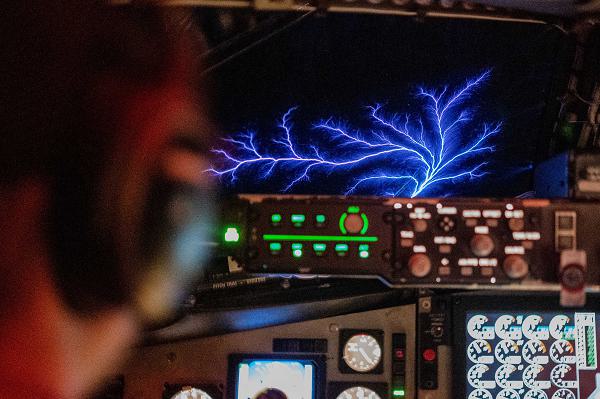
Atlantic Ocean. (February 6, 2025): Ancient mariners were both terrified and reassured by this strange light that seemed to envelope their ships during lightning storms. In this photo by Staff Sergeant Jackson Manske, Captain Russell Ellis flies a routine tanker mission as St. Elmo's Fire, a weather phenomenon, flashes across the window.
St. Elmo's Fire, also called witch’s fire, occurs when a strong electrical field builds up in the atmosphere, usually during a thunderstorm, causing plasma discharges that produce a bluish or violet glow. These lights appear when electrical fields encounter a rod-like object such as a ship’s mast, a chimney, or in this instance the leading edges of an aircraft. The intensity of the lights are determined by the nitrogen and oxygen levels in the Earth's atmosphere and the effect is often accompanied by a hissing or buzzing sound proportional to the strength of the electric field.
Historical accounts of the phenomenon date to ancient Greece and it has had different meanings to various cultures through the centuries. In 1522, for example, Ferdinand Magellan encountered St. Elmo’s fire during his first circumnavigation of the globe. After months at sea, his crew was exhausted, hungry, and near mutiny when the lights appeared around the ship’s masts. The crew saw this as a positive omen and they continued the voyage.
Named after St. Erasmus of Formia (also known as St. Elmo), the patron saint of sailors, the phenomenon is visually striking but not dangerous in itself. For Air Force pilots, it is a rare and beautiful sight.


